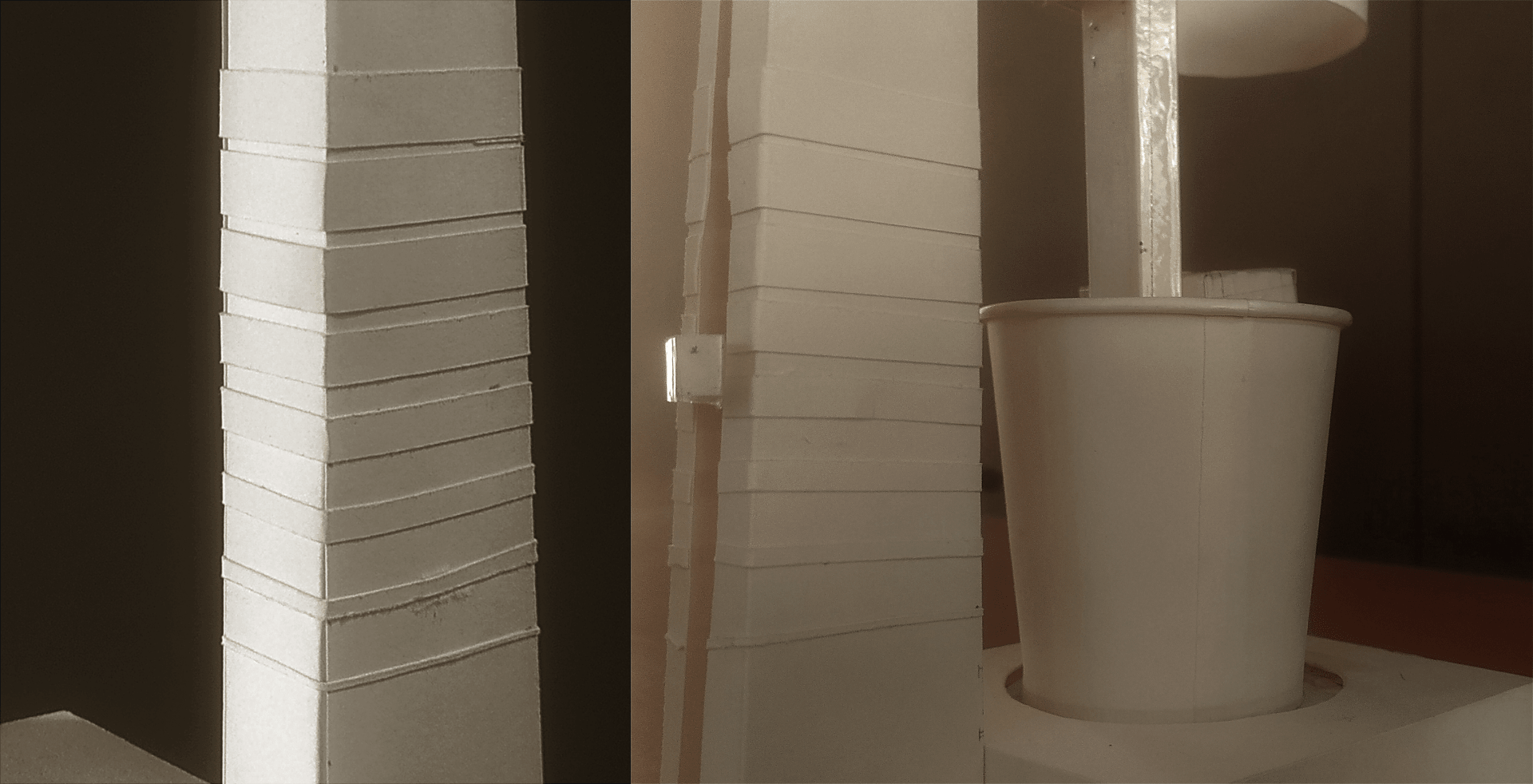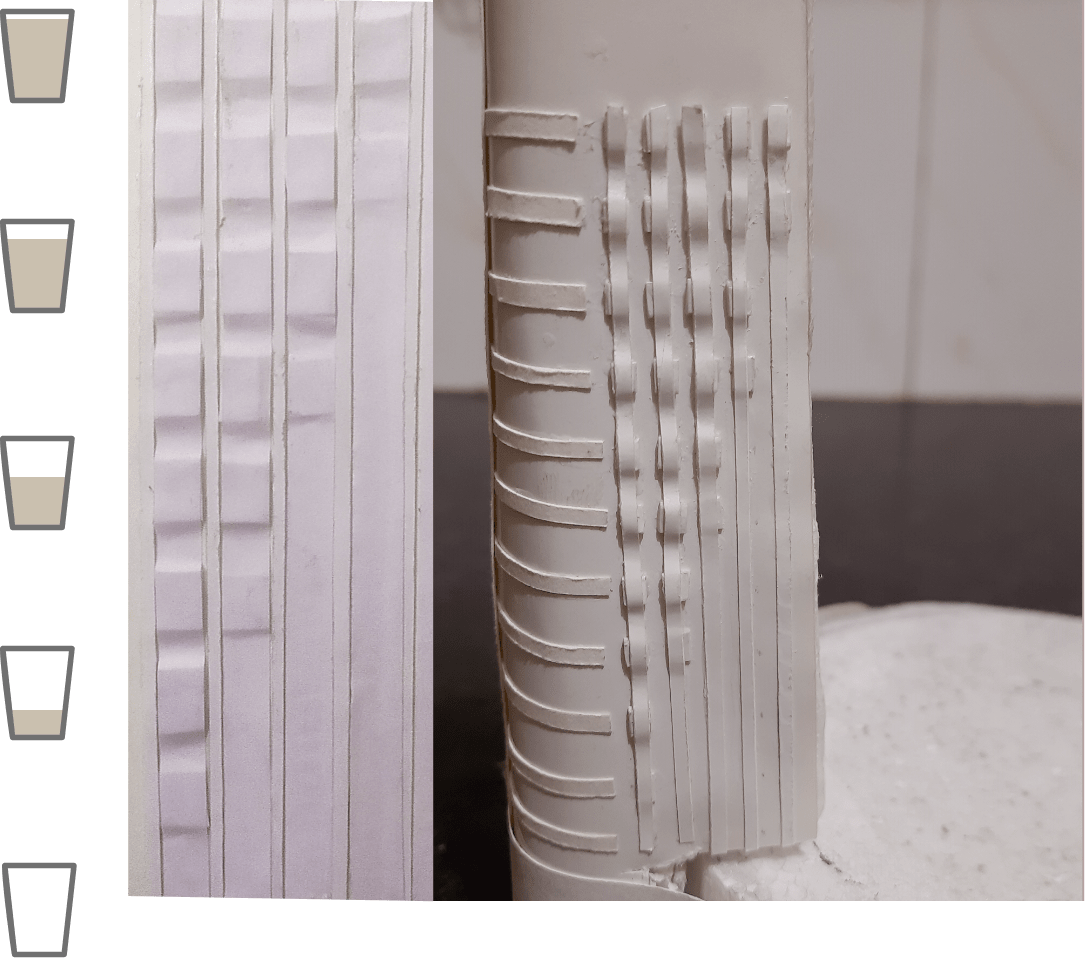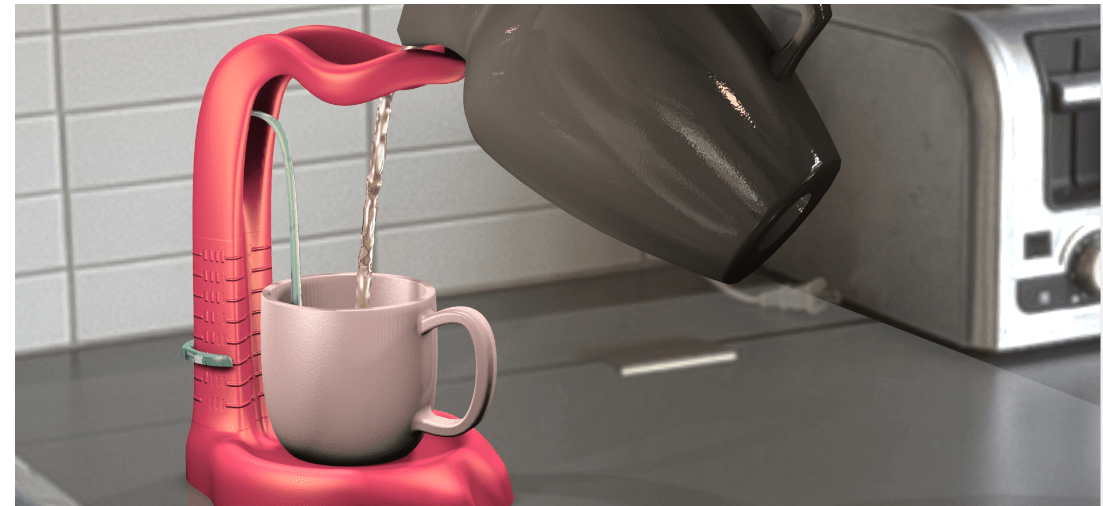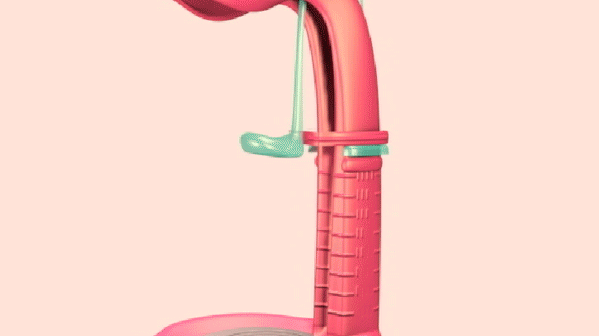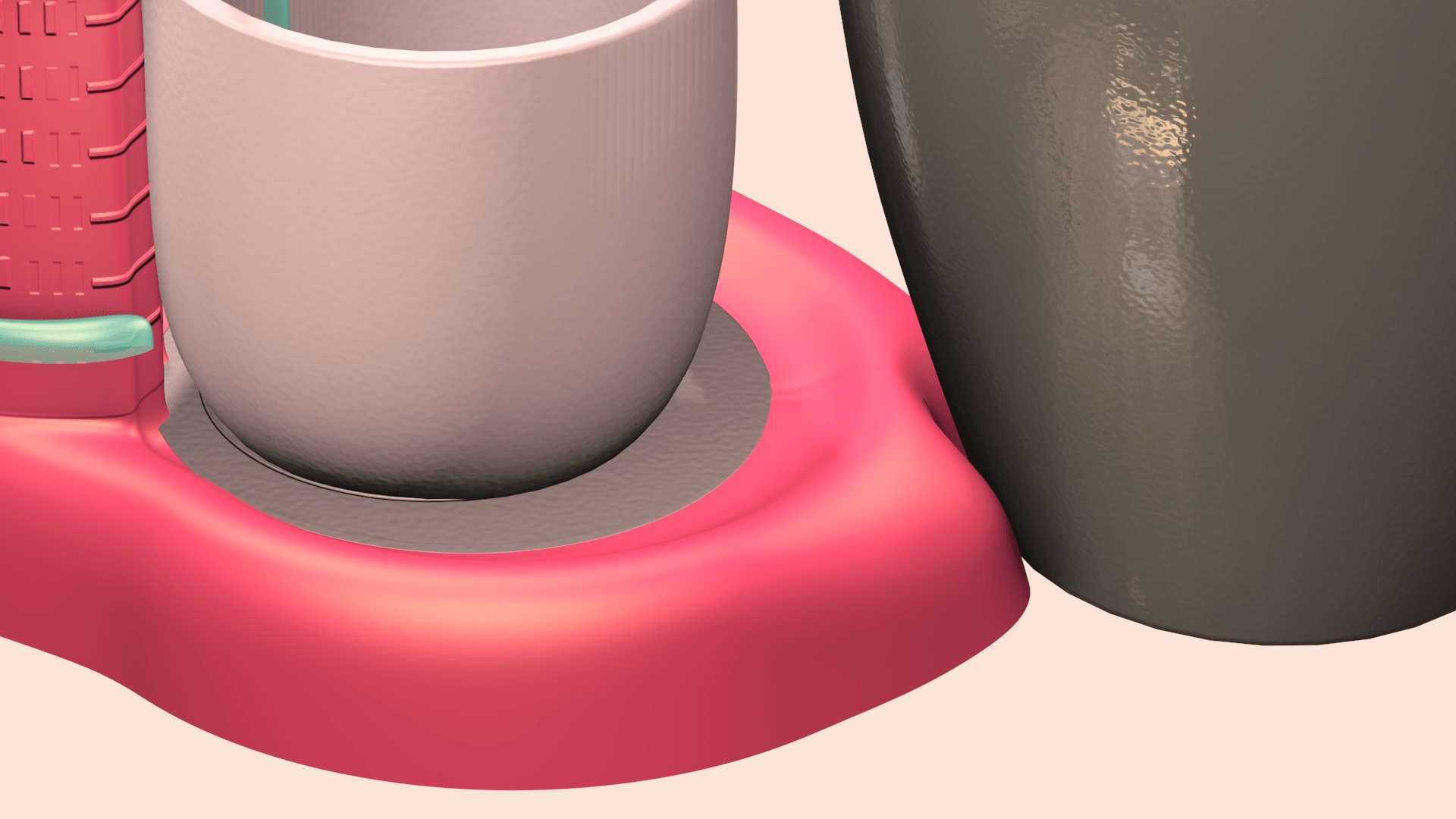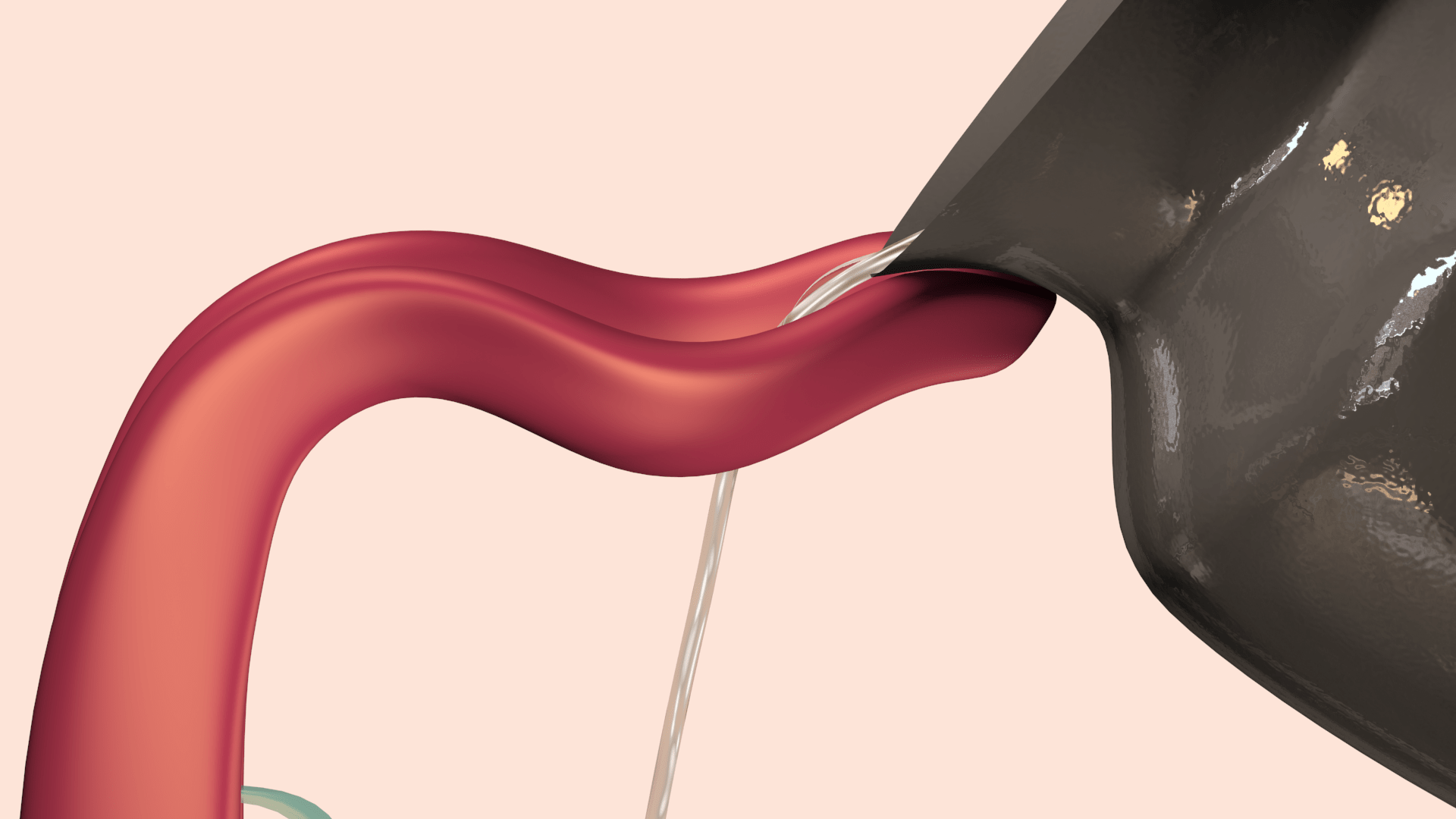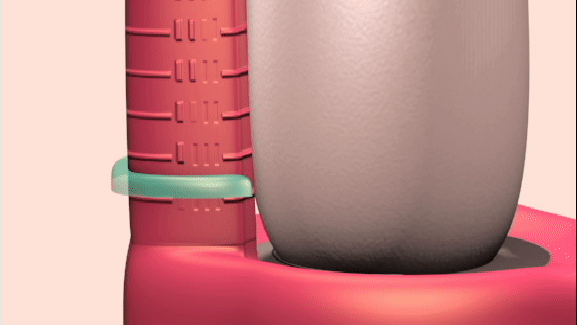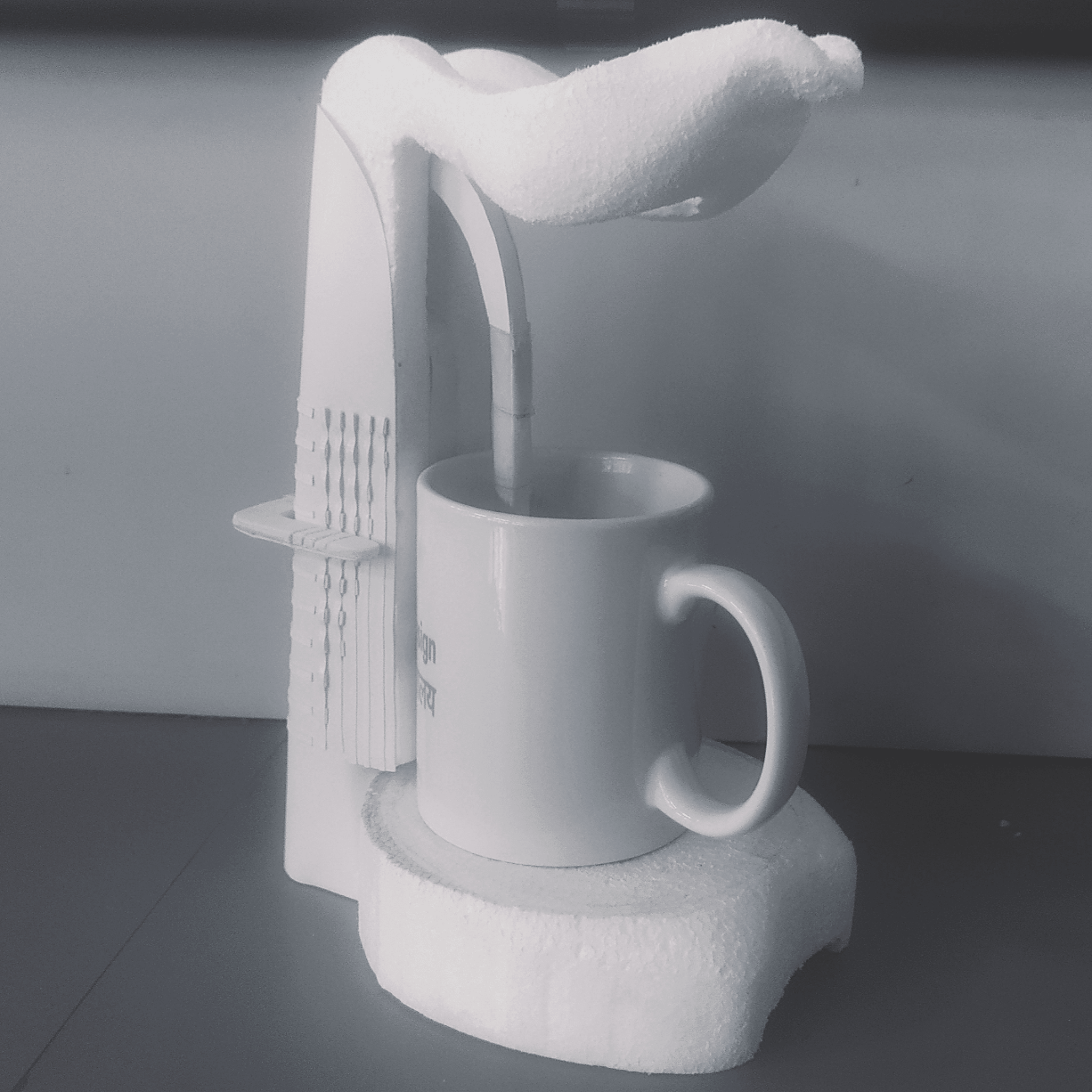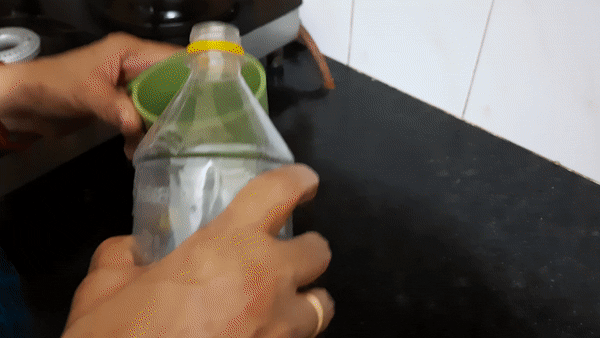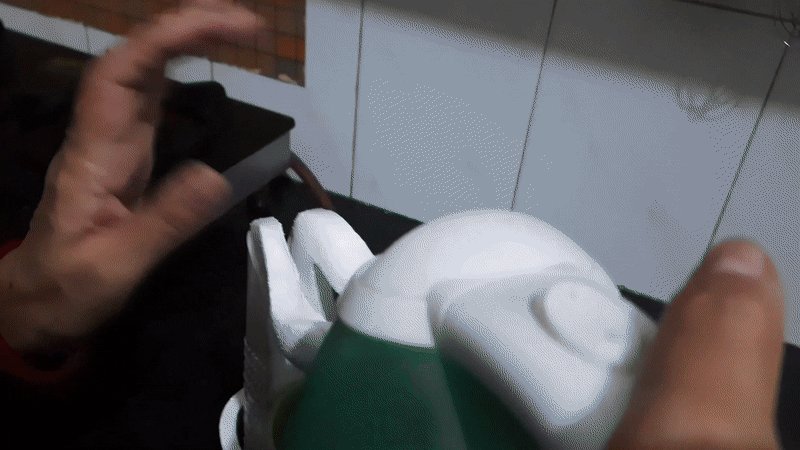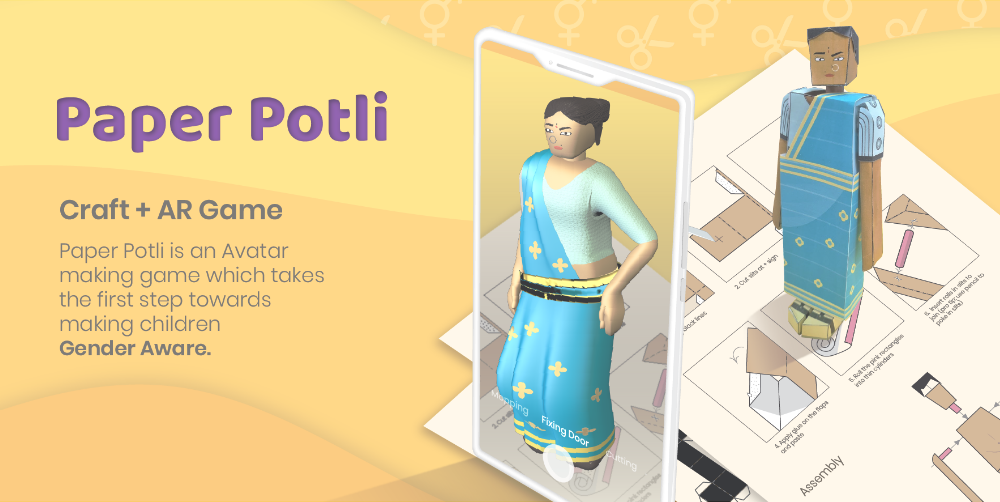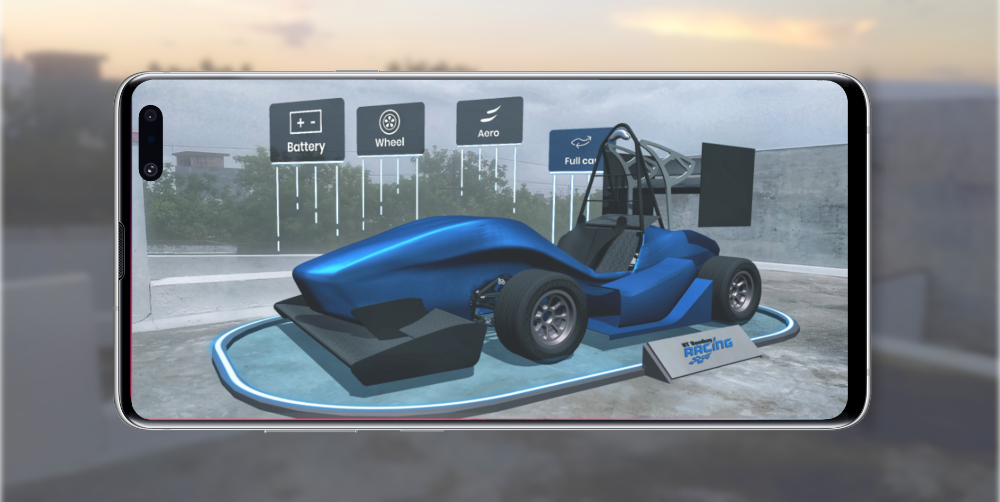EMPATHIZING
Conducted Blindfold Simulation
I performed a blindfold simulation on myself for different scenarios and with different utensils. I observed the behaviour and the challenges first hand and analysed them through a video.
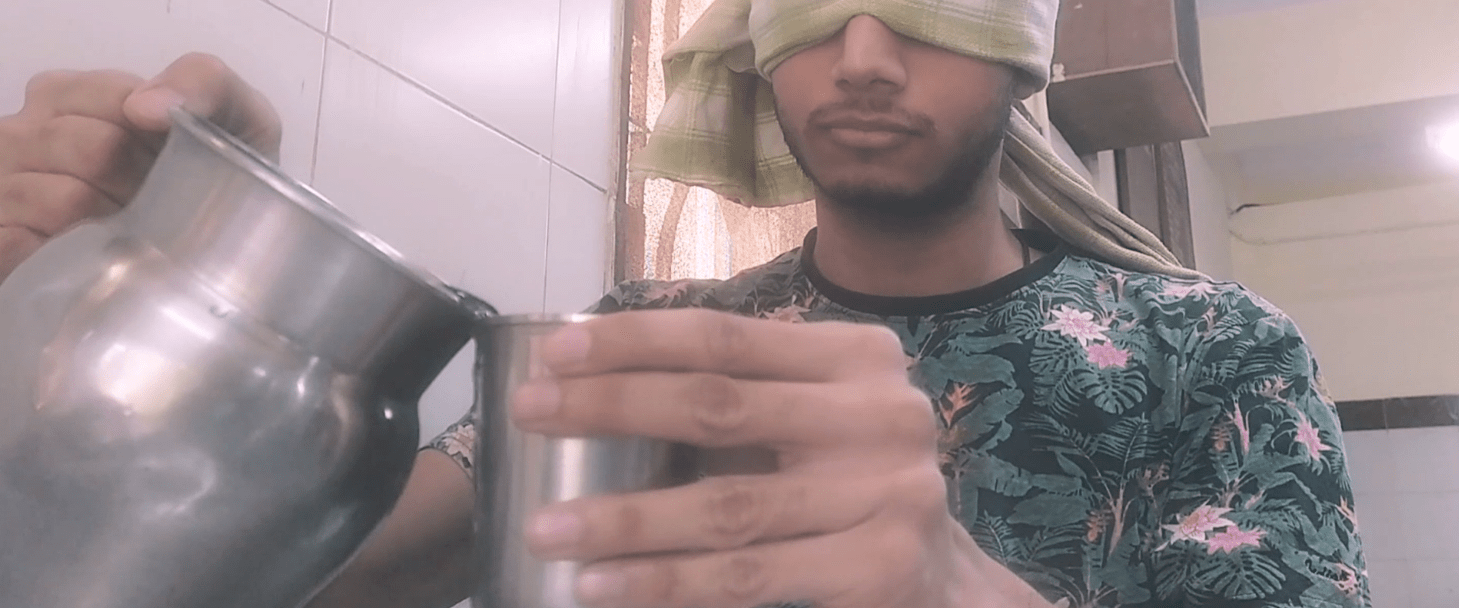
User Journey Mapping
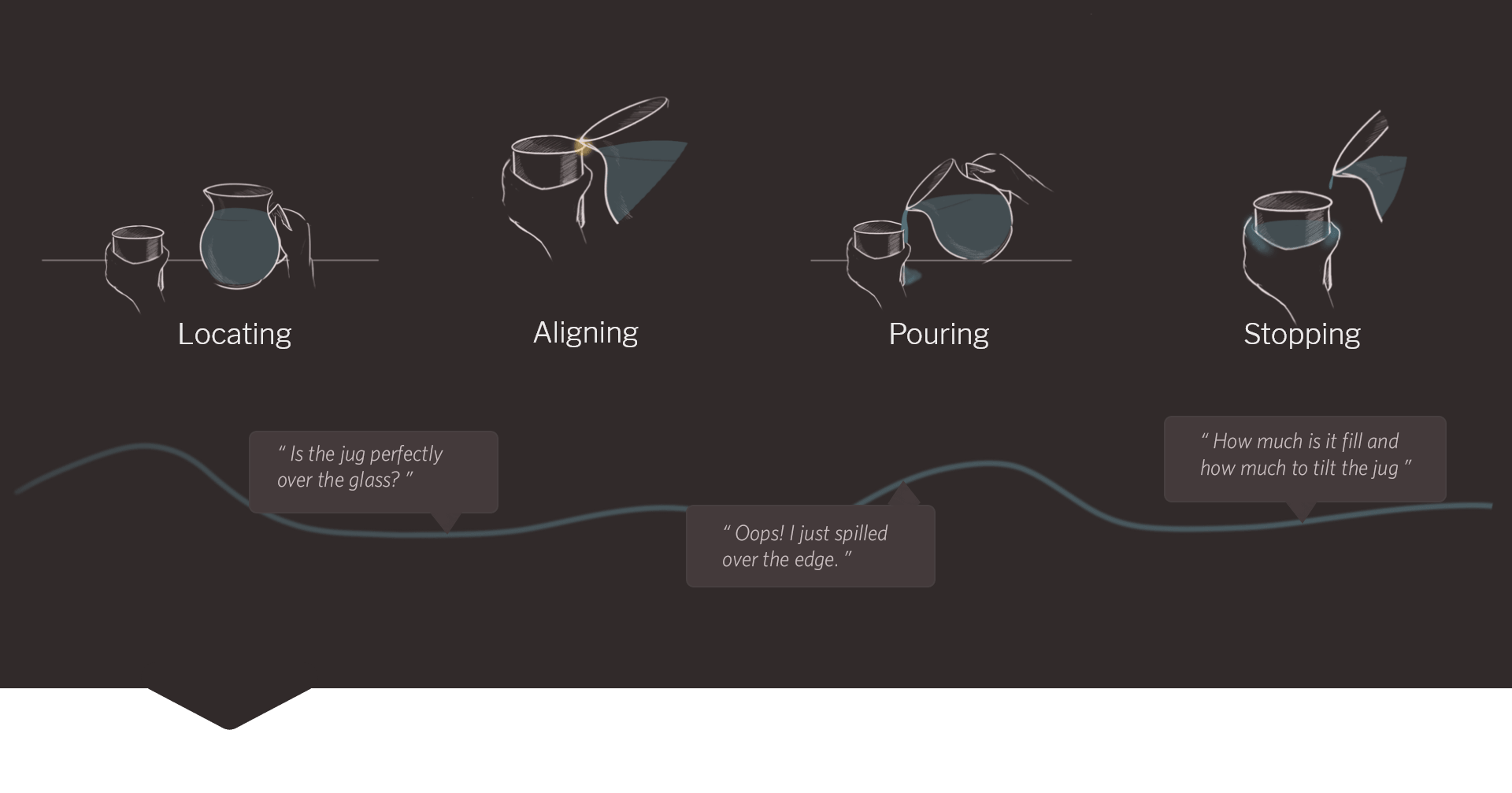
Pouring cold water from jug: Insights
-Large mouth and bulky nature of the jug creates difficulty
-Difficult to aim inside the glass, aligning takes some time
-No feedback of how much water is pouring and is all of it going inside?
-Difference in temperature of glass’ outer surface provides feedback of the level of water filled inside

Pouring hot tea using electronic leveler: Insights
-Storing electronic assistive devices: they might get misplaced
-Leveler does not provide continuous feedback and creates a waiting time of doubt and anxiety
-Grooves on the thermos head provide friction for support against rim and tactile clue to align with cup.
-Flow in a thermos is controlled by the small openings, easy to open and shut the flow at any time with a press
Human Machine System Model
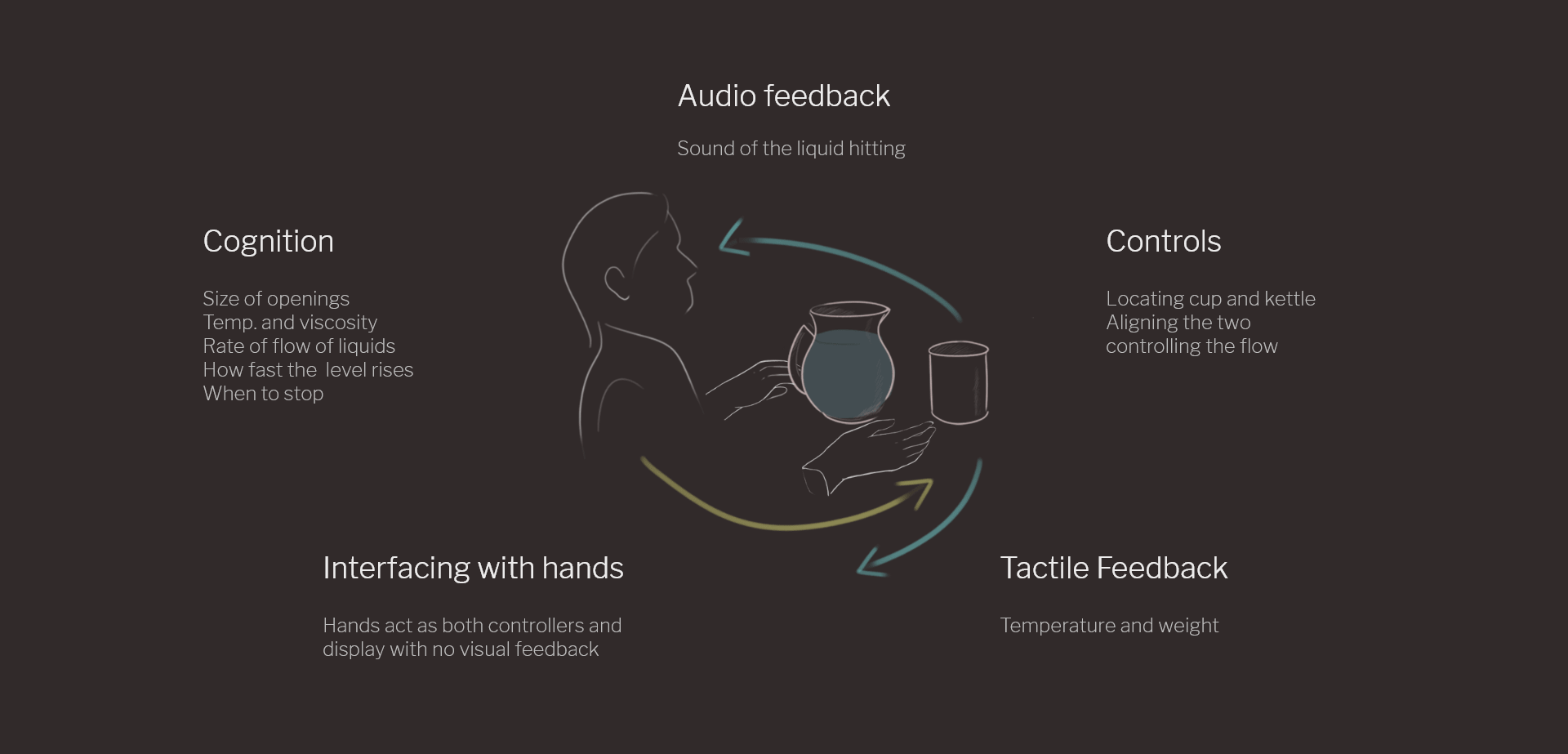
Task Analysis
1. Locating cup and container/ kettle/ bottle in space.
2. Coordinating both hands. Identifying relation between two.
3. Aligning the openings of the two.
4. Pouring liquid in a controlled way.
5. Regulating the flow of liquid.
6. After cup is filled till required level, tilt the kettle back to normal.
Point 3, 4 and 5 are aided by continuous feedback form te system to keep th evessels aligned, control and regulate the flow.







